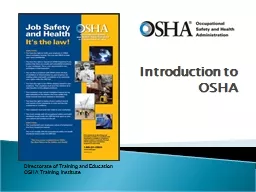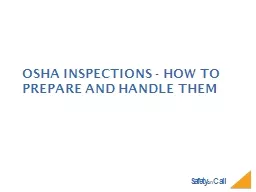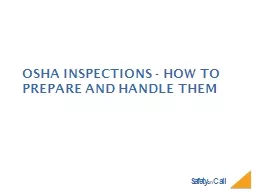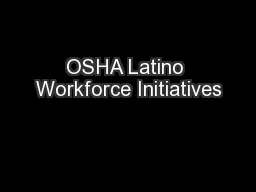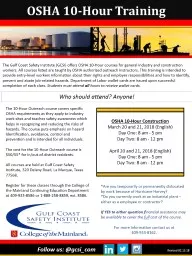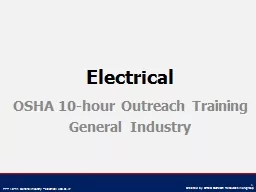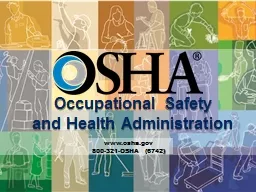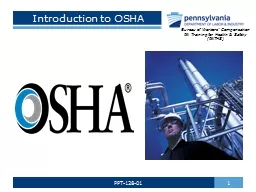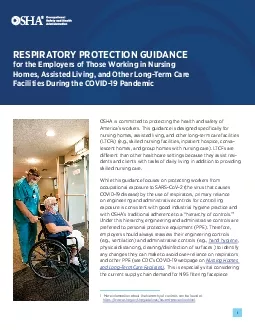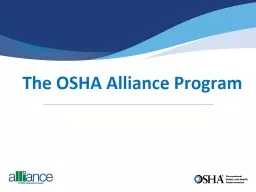PPT-Introduction to OSHA Directorate of Training and Education
Author : tatyana-admore | Published Date : 2018-10-06
OSHA Training Institute Lesson Overview Purpose To provide workers with introductory information about OSHA Topics Why is OSHA important to you What rights do you
Presentation Embed Code
Download Presentation
Download Presentation The PPT/PDF document "Introduction to OSHA Directorate of Trai..." is the property of its rightful owner. Permission is granted to download and print the materials on this website for personal, non-commercial use only, and to display it on your personal computer provided you do not modify the materials and that you retain all copyright notices contained in the materials. By downloading content from our website, you accept the terms of this agreement.
Introduction to OSHA Directorate of Training and Education: Transcript
Download Rules Of Document
"Introduction to OSHA Directorate of Training and Education"The content belongs to its owner. You may download and print it for personal use, without modification, and keep all copyright notices. By downloading, you agree to these terms.
Related Documents

